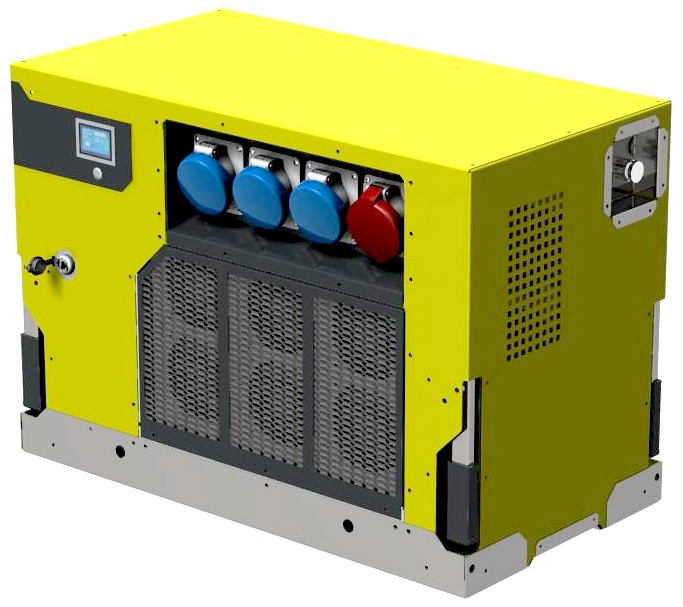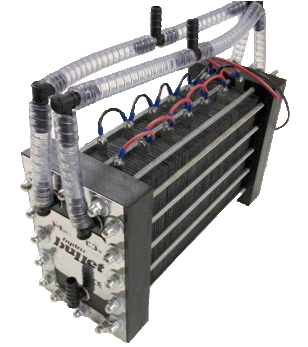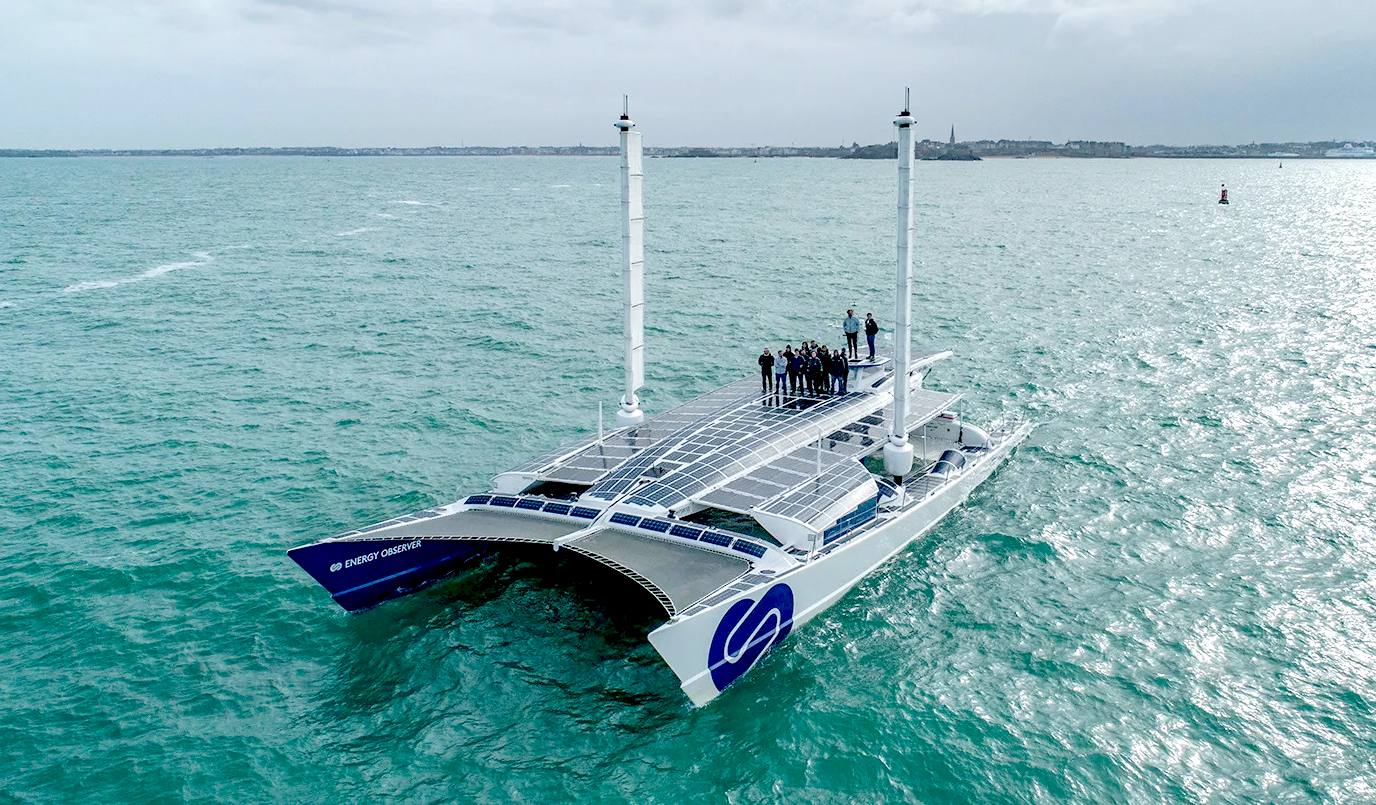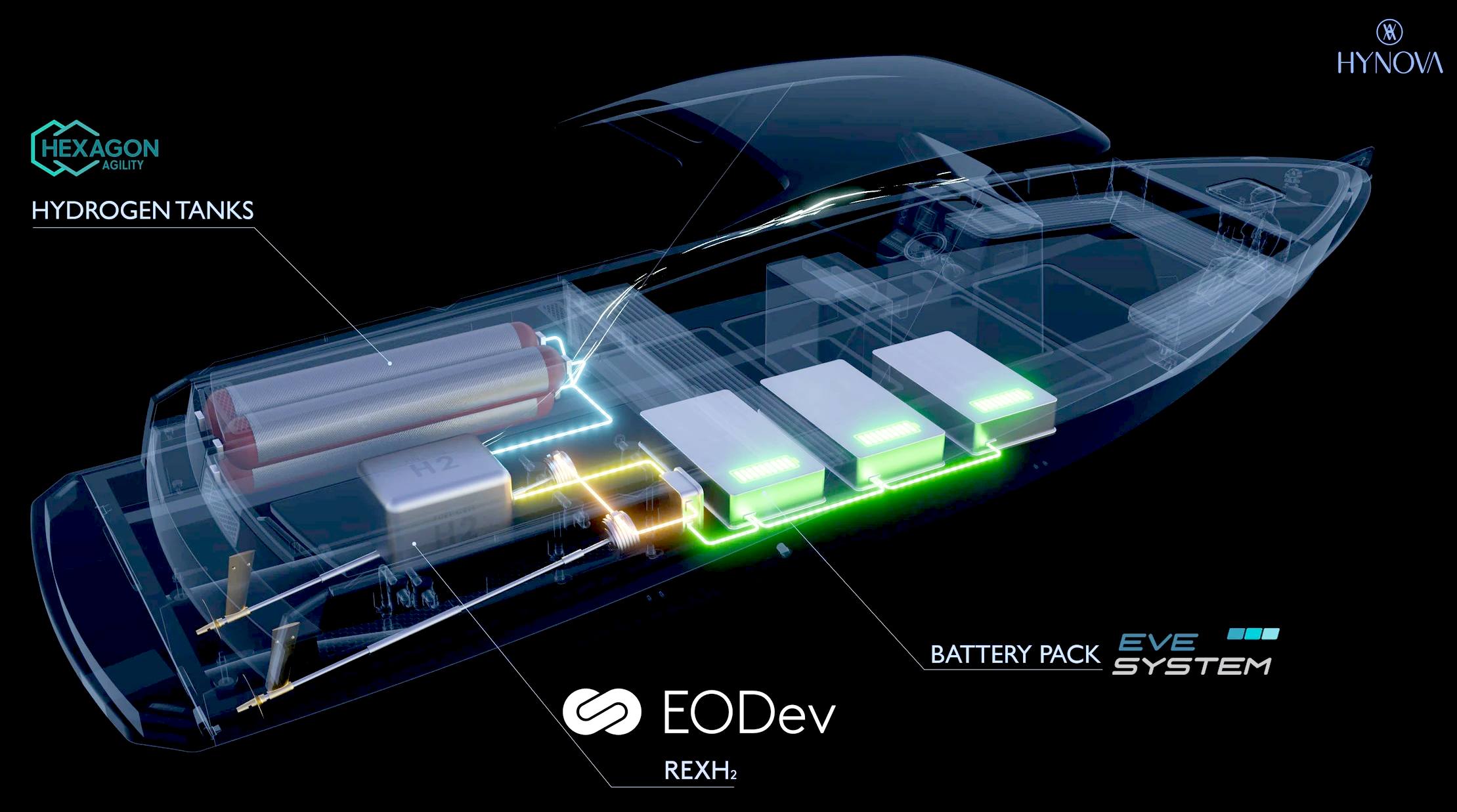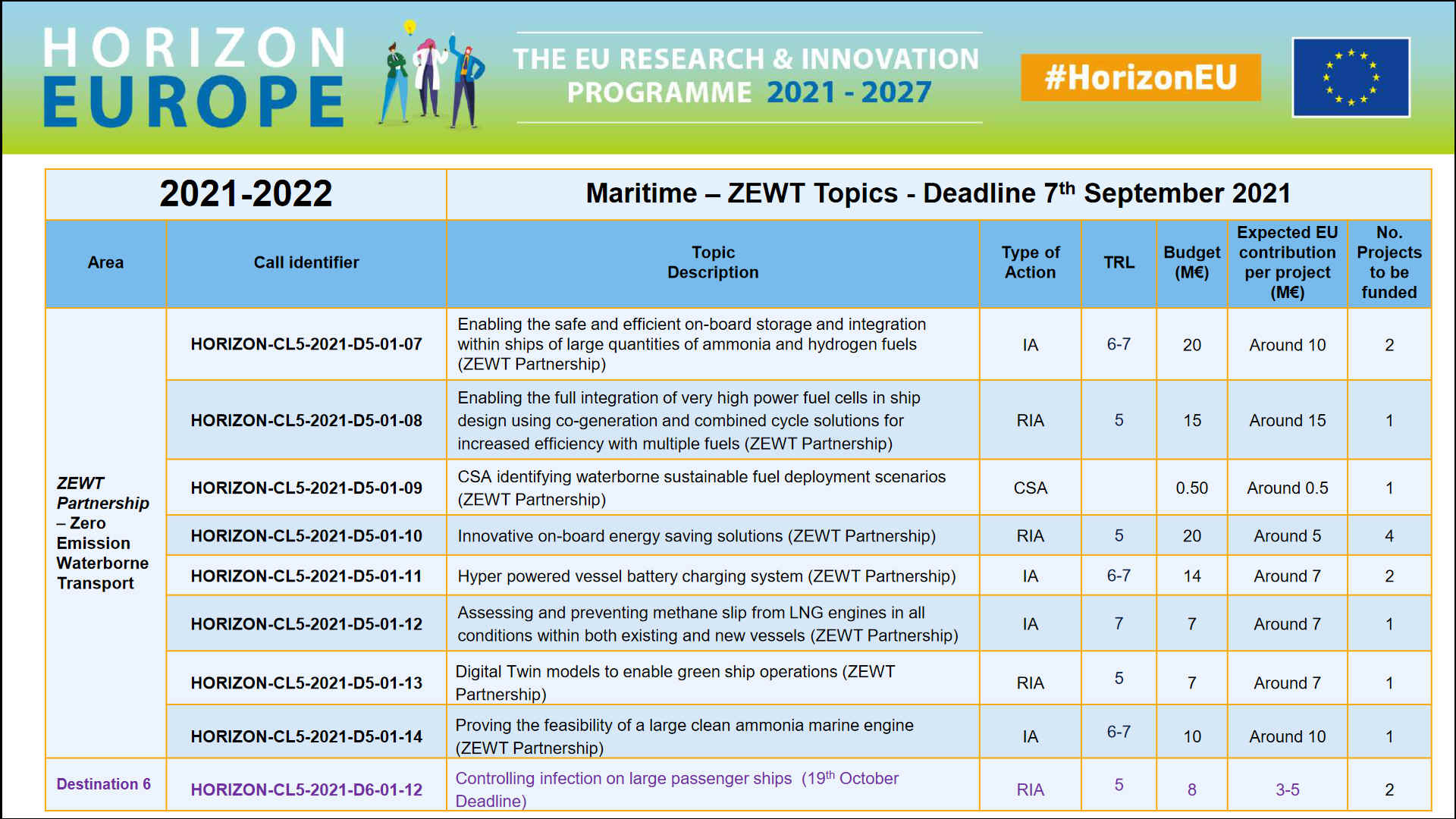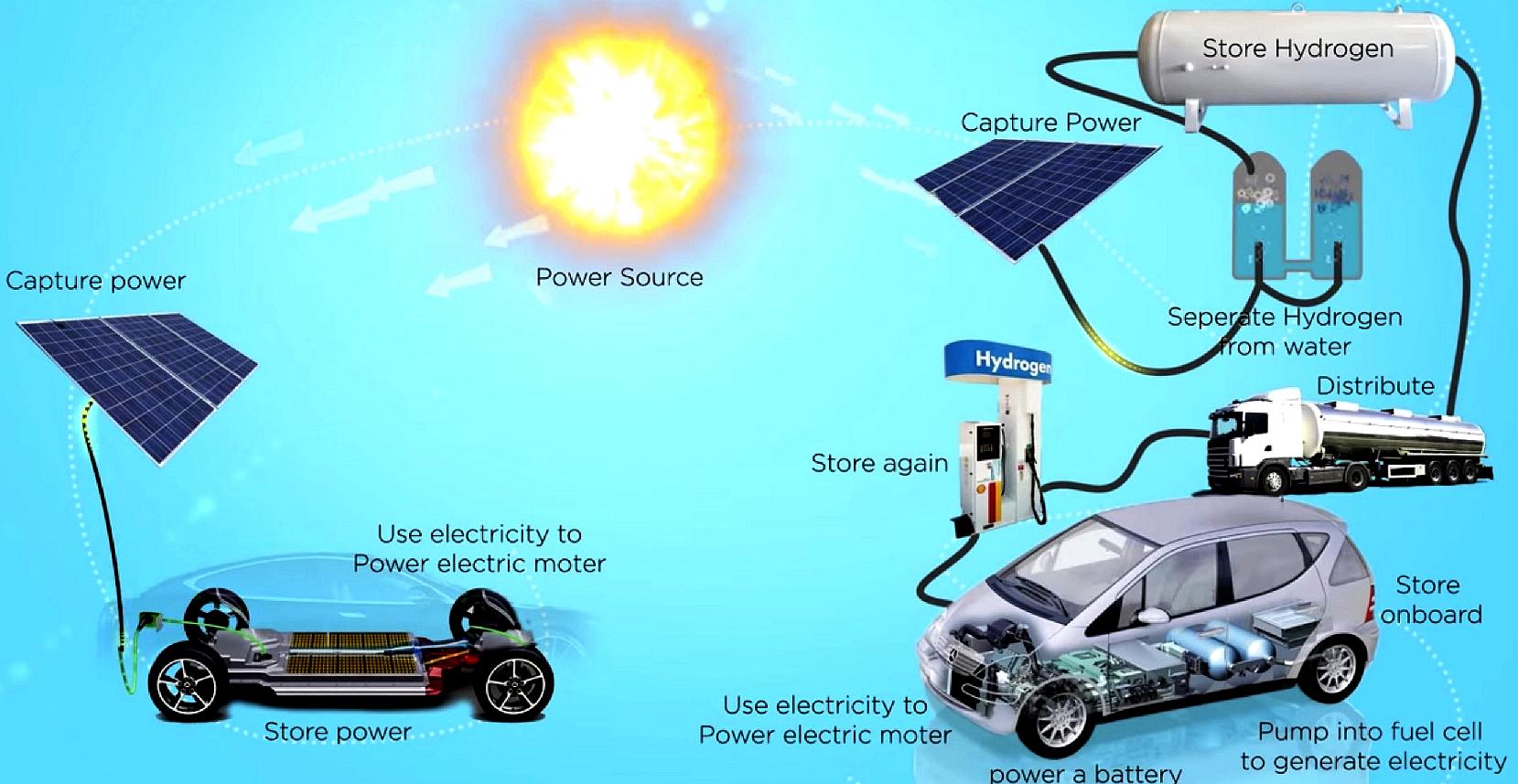|
HYDROGEN - FUEL CELL POWERED BOATS
Please use our A-Z INDEX to navigate this site where page links may lead to other sites, or return HOME
|
|
GENERATING HYDROGEN - Mobile hydrolyzer and fuel cell electricity generators in combination with onboard hydrogen storage, could be a range extending option for short and medium range vessels, such as ferries. The proposed combination could considerably reduce battery mass and cost for new vessels, as identified by Hynova and others.
Rather than opposing batteries to hydrogen as onboard energy storage adversaries, we consider they could be complementary technologies, to cope with solar panels and wind turbine powered hybrid intermittencies. This proposal could be a true accelerator and incubator of solutions for a smart and optimized use of clean energy "mixes", combining different renewable energy sources, to include the mass storage of hydrogen as a range extender, or primary fuel source.
This could mean extremely fast crossing of the English Channel for hydrogen powered ferries. But for larger craft designed along the same principles, and scaled up, it could mean trans-atlantic or even trans-pacific voyages.
Energy Observer, uses a less capacious version of what is proposed for cleaner shipping, replacing more common diesel backup generators, for example, as used on the Mayflower trimaran. But it does mean using high pressure or cryogenic fuel tanks, where diesel is relatively benign.
ENERGY OBSERVER - She started out with 21kW of solar panels, seen here with 34kW of sun packing power, but still has a power to hull displacement ratio of 1.14 kW/ton. That is an improvement on PlanetSolar's 1.05kW/ton, but nowhere near the 3kW/ton of the Elizabeth Swann. Oddly enough, PlanetSolar managed a higher average speed across the Atlantic, over the Observer. Suggesting that the energy conversion chain of the French yacht, is not as efficient as the large Swiss boat. Not wanting to be greedy, but we think we can improve on both of these magnificent achievements. For that is what they are; trail-blazing pioneers.
ENERGY OBSERVER - SUN, WIND & HYDROPOWER
A vessel that is presently developing this theme as a range extending energy-storage solution, is the Energy Observer, a catamaran that has an on board hydrolyzer, compressor and high pressure storage tanks that feed gas into a fuel cell, to make electricity for the electric motors. In 2020 Energy Observer crossed the Atlantic at an average of 4.4 knots, somewhat slower than PlanetSolar's 5.3 knots, but they claim to be improving their technology. If so, we are sure they would agree, that it would have to be a big improvement, to compete with the potential of the Swann as a hydrogen powered ship, if the Swann manages to get anywhere near her target design figures. Especially, in LH2 guise, as per the proposed Jules Verne 150th Anniversary Challenge. With the real barriers being classification, safety regulations and Flag issues. Where some States may be more proactive innovation wise, but where certification using hydrogen, presents naval architects and societies with a minefield of guidance, but no unified specification, where the technology is passing through an adolescent phase.
We have our fingers crossed for the crew of the Energy Observer and may we all learn together, building on each other's achievements. They are using Toyota's REXH2 fuel cell - compressor – inverter set, boasting a maximum power of 60 kW, operated at around 50% of its potential to optimize its output. The problem being, that the hydrogen conversion chain is working against all of us, if generation is onboard, compared to battery storage alone.
HYNOVA, NEW ERA - You cannot get around battery or fuel cell mass (at the moment), but the space and weight of the hydrogen cylinders seen in the picture above, can be avoided if the hull is used to advantage. Unfortunately, most conventional designs are not adaptable, hence, ship hulls that are proposed as suitable for hydrogen power, by the majority of naval architects, may not benefit from the proposed hydrogen range extending innovation.
Electro-hydrogen hybridization is at the heart of the propulsion system of The New Era by HYNOVA Yachts, the first day-boat equipped with a REXH2® running on hydrogen and currently in approval phase. This is the brainchild of Frédéric Ménière, President of EVE System, Chloé Zaied, Managing Director of HYNOVA Yachts, and Romain Jallon, Director of Operations at EODev.
HYNOVA YACHTS - NEW ERA
On their New Era vessel, hydrogen is stored in carbon fiber tanks, under pressure (350 bars). The advantages compared to the other options are the same as found on board the Energy Observer boat: zero emissions (no CO2 or fine particles), silent, and greater density of power and energy than with an "all-battery" solution.
According to Hynova, the fuel cell provides the average power required to propel the ship, and the batteries will provide the peaks of power. This allows for intermittent power to the propellers of 300kW with a fuel cell of 60kW. The overall efficiency is improved because the battery thus operates at its optimum.
The hydrogen hybrid solution makes it possible, like a PHEV (Plugin Hybrid Electric Vehicle), to perform short services 100% electric on battery, and longer services, such as Cross Channel Ferries, with the energy supply of hydrogen.
The fuel cell and the batteries are connected in parallel to the voltage network supplying the motors. The Fuel Cell can only supply power, while the battery can supply power to motors or receive power from the Fuel Cell. The role of the batteries is to respond to calls for power from the motors, and to provide additional power to achieve maximum speed. The relatively short demands for speed are provided by the two sources together. Sizing the fuel cell to maximum power improves the compactness of the propulsion chain. A hybridization management algorithm optimizes the operation of the whole system.
On The New Era, they employ 250kW in battery power and 132kWh in energy storage. The battery is sized with respect to the average power required for the operation of the vessel.
Their battery packs were designed by Eve Systems, using Lithium-Iron-Phosphate technology. This offers lower energy density than Lithium NMC technology used in cars, but is more liable to thermal runaways leading to battery fires that cannot be extinguished. In discussions with Bureau Veritas on the certification of a hydrogen vessel, they advised Hynova against the use of NMC batteries, which they do not yet certify.
Design is a compromise. Automobile OEMs use NCA (Tesla) and NMC (all others). In heavy industries, and especially in boats, LTO and LFP are used for safety. LFP for energy density. LTO is for heavy usage, fast charging, but limited use - expensive and weighty. Hynova, use LFP, as per electric/hybrid work boats that sail in France. It's a reasonable solution to combine safety, performance and durability. Ref: Romain Jallon, Frédéric Ménière, and Chloé Zaied.
AUTOMOTIVE INFOGRAPHIC - Many readers will be familiar with this illustration of the energy conversion and supply chain for automobiles. At every stage of conversion or distribution, free energy from the sun becomes diluted, until it gets to the end user. Solar powered cars have been breaking the speed limits on Australian roads for years, during the World Solar Challenge. With all the losses associated with hydrogen, why should we bother with the extra complications? The answer is energy density, storage potential, and recycle-ability.
NOVEL HYDROGEN STORAGE SYSTEM
The Elizabeth Swann has an ideal hull configuration for mass hydrogen storage. No other vessel design that we know of is as suitable, as we write.
It remains to be seen if there will be any real performance gains from such innovation and inclusion, after all the losses have been taken into consideration, even with the virtual elimination of losses in the compression stage used in the Energy Observer. All to be balanced against the additional displacement that we seek to avoid.
For use as a ferry, the hybrid formula we are suggesting, we believe, has considerable potential, that is yet to be explored, as a ZEWT, or any other zero emission project.
HYDROGEN LIQUID & GAS PROJECTS A - Z
2000 - The 22-person Hydra ship was demonstrated.
2003 - Duffy-Herreshoff watertaxi went into service.
2003 - Saw the debut of Yacht No. 1, and Hydroxy3000.
2004 - The AUV DeepC, and Yacht XV 1 were shown.
2005 - The Type 212 fuel cells submarine went into service with the German navy.
2006 - The 12-person Xperiance was debuted, as well as the Zebotec.
2007 - The 8-person Tuckerboot and the Canal boat Ross Barlow debuted.
2008 - The 100-passenger Zemships project FCS Alsterwasser went into service in Hamburg.
2009 - The Nemo H2 and the Frauscher 600 Riviera HP went into service.
2013
- The Hydrogenesis Passenger Ferry project went into service. 2018 - HySeas III project, for the Orkney Islands: to build the world’s first sea-going car and passenger ferry fuelled by hydrogen fuel cell propulsion, secured EU funding, aiming for 2021, led by Ferguson Marine Engineering Ltd and St. Andrews University.
2018 - Jules Verne 2, hydrogen-powered passenger riverboat, running on fuel cells supply, with a hydrogen station temporarily installed in Port Boyer fueled byAir Liquide.
2021 - The Kawasaki New Sunshine Project, Suiso Frontier, received classification Approval in Principle in April.
2021 - The liquid hydrogen powered car ferry MF Hydra was delivered to Norled in August.
2023 - Fjord cruise ship Havilla, Havyard, NES, LH2 fuel cell & battery powered liner is under development.
|
|
|
PUSHING THE BOUNDARIES OF HYDRO-SCIENCE - The solar and wind powered 'Elizabeth Swann' will feature solar energy harvesting apparatus in an advanced configuration, suitable for incorporation of green hydrogen technology.
|
|
|
|
